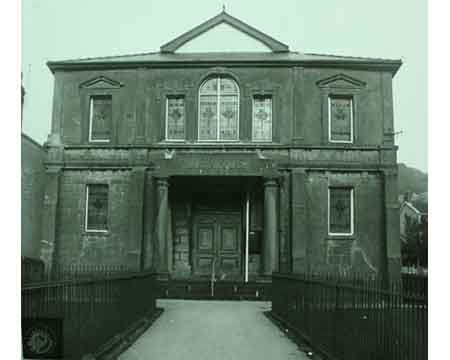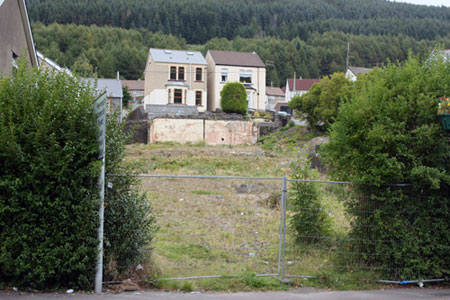Libanus(1849)Welsh Baptist, Bute Street, TreherbertBuilt: 1849 , Extended or Rebuilt: 1858, 1909 [Sittings: 650]
 Libanus can trace its origin way back to before 1825 and a branch cause of Nebo, Ystrad. Typically, meetings were held at Cwmsaebren. And in 1825 the fellowship rented premises at Pen-yr-englyn. In 1840 what was to ecome the chapel's vestry was opened.  Image © Copyright Glamorgan Archives - Reference: MGCS/CS/54.004
The 'Daughter' became a church in its own right in December, 1848 and officially recognised the following year.
Libanus would, in turn, champion the cause of Blaenycwm and assisted in the formation of Bethany, Noddfa in Treorchy plus Treorchy's English Baptist church of Horeb.
Two ministers deserve mention. Firstly, Edwyn Edmunds who did not stay long but subsequent to his ministry at Bethesda, Swansea became the first full-time Secretary of The Baptist Union of Wales. Libanus' longest-serving was David Pryse Williams who for some 32 years sheparded the flock. My mother, although not a member of Libanus, although her monther initially was, described him as a warm, gentle man. Words she could not use of at least one of her church at Bethany. (There is a photograph in the 'extra content' of Bethany that shows a group of ministers and officials at the re-dedication of Bethany in 1940's and I understand that the Rev. Williams is amongst them.)
I have two personal memories of Libanus. The more recent, and the only time I was inside the main chapel, was at the wedding of my younger sister since Providence did not possess a licence. But in my younger days, with my elder sister, I would attend their Christmas fete in the vestry which was quite a substantial building in its own right.
The vestry held the services of the church during the 1980's until the church held its final service in 1997. There were plans to adapt the chapel for community use but nothing came of it.
The chapel was actually a listed building which inhibited its sale. However this did not prevent demolition and the waste-land that remains to this day.
Document Sources:-
MGCS 54/4
Trafodion 2003 pg 38.
|